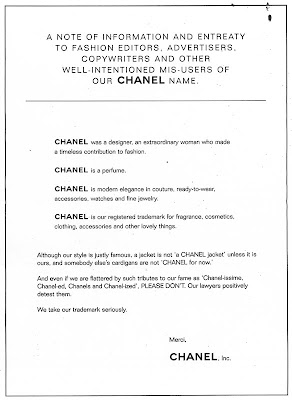 Fashionista has been busy this week! On Thursday afternoon she attended the most recent Fashion Business Club meeting, at which Aquascutum's head of womenswear Michael Herz interviewed Diane von Furstenburg's Creative Director Nathan Jenden. The interview came hot on the heels of Jenden's successful show at London Fashion Week which, for Jenden is the best showcase for a brand. When commenting on the use of films to promote brands as an alternative to a fashion show, Jenden quipped "It's all about the show".
Fashionista has been busy this week! On Thursday afternoon she attended the most recent Fashion Business Club meeting, at which Aquascutum's head of womenswear Michael Herz interviewed Diane von Furstenburg's Creative Director Nathan Jenden. The interview came hot on the heels of Jenden's successful show at London Fashion Week which, for Jenden is the best showcase for a brand. When commenting on the use of films to promote brands as an alternative to a fashion show, Jenden quipped "It's all about the show".Having worked in Paris for John Galliano and Kenzo, and in the US for Tommy Hilfiger and Daryl K, Jenden joined forces with Diane von Furstenburg: his self styled icon and brand - preferring to see her in Dior menswear on a Harley Davison, than in couture. Now designing for both DvF and his eponymous brand, Jenden was asked how he manages to keep the two brands separate.
Fashionista mused: this must surely be a difficulty faced by any designer having to wear two design hats, whether in the case of Jenden, seeking to design for two separate high end brands; or whether in the case of designers such as Matthew Williamson, Karl Lagerfeld and Stella McCartney, who have designed for both high end brands and high street stores. How do designers recreate the signature styles associated with their names without blurring the distinction between brands?
For Jenden, the two brands are easy to separate. His designs for his Nathan Jenden brand tell his story and, whilst he loves working for DvF, his DvF designs tell Diane's story. "A collection should feel like a part of life" Jenden explained, and so, a DvF "Lawrence of Arabia" themed collection was based on a holiday Diane took in Oman. Fashionista suspects that the job may be harder for luxury brand designers who agree to create a range for a high street store. They have the difficult job of showcasing their brand to a different audience at a reduced price level, whilst not diminishing the value of their brand - which justifies the price tags that the main collections can demand.
Ultimately: times are good for Nathan Jenden. Maybe its the thought behind the designs that is a winning formula. The prints, the colours, the styles: they are tailored for his market to ensure that garments are going to suit whoever tries them on. But the most important thing? Remembering that fashion is about attitude; about being fun, upbeat and not too serious - it is not really about clothes.
An enlightening "behind the scenes" look into the life and work of such a busy man, and Fashionista is already looking forward to the next FBC meeting...









